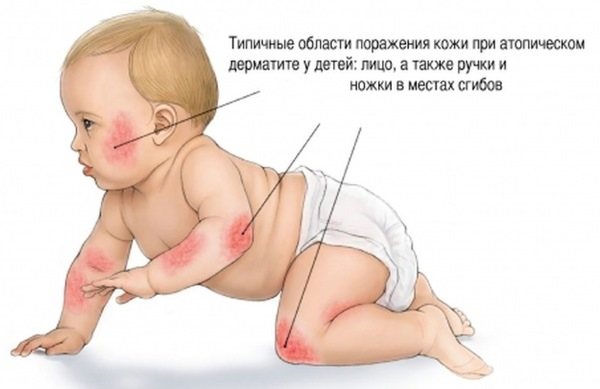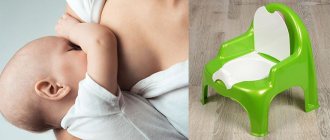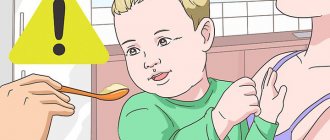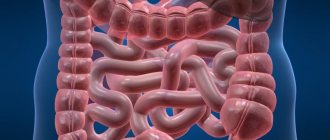Many women and girls face the problem of itchy breasts during breastfeeding (breastfeeding). This is most often due to the fact that milk comes in, the breasts increase in size, the skin stretches and begins to itch.
During milk production, during lactation, the milk ducts are filled with a large amount of milk, blood circulation increases significantly. This leads to changes in the size of the mammary glands and stretching of the skin.
This phenomenon is not considered a problem, but rather a common occurrence during breastfeeding, although it brings considerable discomfort, because the constant feeling of dryness, itching and flaking is exhausting and does not allow you to fully rest and take care of the child.
Typically, the breasts stop itching after the lactation process improves, milk is produced exactly as much as the baby needs, and the mammary glands take on a certain size.
Causes and symptoms
The appearance of urticaria symptoms in a nursing mother can be caused by a variety of reasons. The body, weakened by pregnancy and childbirth, overworked by insomnia and caring for the baby, is sensitive to any influences:
- stress,
- hormonal changes
- infectious diseases,
- helminthiasis,
- allergenic products, household chemicals and cosmetics,
- taking medications and multivitamins,
- fur, skin particles and saliva of pets,
- different temperatures (hypothermia or overheating),
- inhalation allergens (pollen, house dust),
- ultraviolet irradiation (sunlight, solarium),
- insect bites.
Postpartum urticaria may continue until the end of breastfeeding. Regardless of what factor triggered the onset of the disease, this condition of a nursing mother requires treatment.
Hives are not contagious and cannot be transmitted to the baby through feeding. However, allergic diseases are often hereditary, so the appearance of a rash in the mother may indicate that the child is predisposed to allergies.
Symptoms of urticaria in a woman who is breastfeeding are severe itching of the skin and the appearance of blisters of various shapes and sizes, of a dull color (they turn pale when pressed). The localization of rashes is not limited in any way: they can appear on a small area of the body or cover the entire surface of the skin, depending on the intensity of the body’s reaction and the cause that caused it.
Blisters with urticaria appear suddenly and can disappear just as quickly; “migration” of rashes is possible, when they pass in one place and appear in another. The characteristic “nettle” rash can be seen in the next photo.
Urticaria that appears after childbirth can be acute (short-term) or chronic (lasting for a long time, with periods of exacerbations and remissions). The possibility of angioedema (Quincke's edema), which affects the mucous membranes, skin and subcutaneous fat, cannot be excluded .
Itchy breasts - possible causes
If a nursing mother has been bothered by itching in the breast area for a long time, first of all, she should not scratch it in order to avoid infection through cracks in the skin.
And of course, you need to understand the possible reasons why the mammary glands may still itch. Indeed, in some cases, when even with established lactation, the feeling of discomfort does not go away, itching may be a sign of other concomitant diseases. Here are the most common of them:
- nipple thrush;
- avitaminosis;
- mastitis;
- improper attachment during feeding.
Many mothers who are too busy caring for the baby may ignore painful and uncomfortable sensations. But if your breasts continue to itch, it is better to consult a doctor for examination and to identify possible causes.
It is necessary to consider in more detail all the possible signs of the above diseases that can provoke a constant desire to scratch the chest, as well as ways to combat them.
Diagnostics
Severe itching and characteristic rashes may indicate the presence of serious pathologies in the body. That is why the diagnosis of the disease should be entrusted to a professional.
An allergist will need as much information as possible to make an accurate diagnosis:
- medical history (list of past diseases, information about hereditary diseases, vaccinations, predisposition to allergies),
- a complete list of all symptoms that have appeared,
- nutritional features of a nursing mother,
- information about vitamins and medications taken,
- information about the conditions under which symptoms appeared,
- You may need to undergo a number of standard tests (general blood test, urine, feces) and special tests (for antibodies, for helminths and infections).
The accuracy of the diagnosis and the effectiveness of treatment prescriptions depend on the completeness of the information.
Avitaminosis
The diet of a nursing mother should contain a complete set of vitamins, micro- and macroelements, fats and saturated acids. If your mammary glands itch during breastfeeding, this may be a sign that your body lacks vitamins. First of all, you need to establish a diet that provides the woman with all the necessary substances that are important for the health of both the mother and the child.
Flaky skin and itching are signs of a lack of vitamins A, E and C, as well as Zinc. You can include foods containing sufficient amounts of these vitamins in your menu or start taking special vitamin complexes that your doctor will prescribe.
Many have forgotten about the benefits of fish oil, but it contains Omega 3 acids, which will maintain a healthy nervous system, improve blood circulation and absorption of nutrients, in particular vitamin D. While taking fish oil, to get rid of the feeling of itching in the chest area, you need to take sunbathing and spend more time in the air.
Therapy
Treatment of urticaria in women during breastfeeding has a number of features.
Most medications can pass into breast milk and affect the baby. That is why mother should be careful when choosing medications and strictly adhere to the doctor’s recommendations.
With the exception of particularly severe cases, treatment of urticaria is carried out at home, but under the supervision of a specialist.
Prescribed therapeutic measures have several main goals:
- identify and eliminate the factor that provokes the disease,
- cleanse the body (blood and breast milk) of allergens and other toxic substances,
- relieve itching and discomfort,
- cure skin rashes and prevent possible relapses.
Since the disease occurs quite often, including in women after childbirth, medicine has a large arsenal of proven and safe treatment methods for this case.
Itching Remedies
The choice of drugs to combat itchy rashes should be done with great care. During this period, hormonal ointments are strictly contraindicated for a woman . The active ingredients of such drugs penetrate into the milk and pose a threat to the baby. The safest remedies for relieving itching during breastfeeding are:
- Bepanten ointment,
- aqueous solution of table vinegar (1:1),
- cucumber juice,
- aloe juice,
- decoctions of some herbs (chamomile, string, elderberry), if there is no allergy to these plants,
- if the rashes occupy a significant area, you can take a warm bath with oatmeal or vinegar dissolved in it,
- The use of moisturizing creams with vitamins (Lipobase) will not cause harm.
If it is possible to identify and eliminate the allergen, the external signs of the disease should disappear on their own in a short time.
Can you be allergic to breast milk?
Mother's milk is considered the main food for a baby in the first year of life. However, negative reactions of the body to ingested substances are possible. Food allergies are caused by polypeptide proteins contained in foods and chemical components (dyes, thickeners, preservatives).
The response of allergens is immunoglobulin. Thanks to heat treatment, some allergens lose their quality, while others, on the contrary, increase their quality.
A newborn baby is most susceptible to allergic reactions to foods and has a harder time with them. If a mother eats a “forbidden” product during lactation, the baby will develop a rash or redness on the skin in 80% of cases. There is a concept of late allergies, which manifest themselves after a few days.
What medications can you take?
The decision to prescribe any medications should be made by the doctor based on the existing symptoms and test results.
The doctor compares the expected benefits of taking the medicine and possible negative consequences for the child.
Antihistamines
In cases where the resulting urticaria causes serious concern and can threaten life and health (for example, when the risk of developing angioedema is high), the doctor may decide to prescribe antihistamines:
- Zyrtec,
- Fenistil,
- Erius,
- Claritin,
- Fenkarol,
- Tavegil,
- Suprastin.
Regardless of the generation to which the drug belongs, taking such drugs during lactation is always a certain risk. They pass into milk, but their effect on the condition of infants has not been studied. That is why, if the decision about the need for a course of an antihistamine is nevertheless made, it is recommended to stop breastfeeding for the period of treatment.
In reviews and on forums you can find information that it is supposedly safe to take Fenistil during lactation, since according to the instructions it is approved for the treatment of children older than 1 month. This is not entirely true. Firstly, the abstract assumes that the child (and not his mother) is sick and needs treatment. Secondly, the active substances will probably end up in milk in a modified form, and the effect they produce is difficult to predict.
In severe cases of the disease, the attending physician may prescribe therapy with hormonal drugs - glucocorticosteroids (Prednisolone, Dexamethasone) . The course may involve intramuscular, intravenous or oral administration of drugs. During treatment with such drugs, breastfeeding should be stopped. After completion of the course, lactation is resumed.
Homeopathic remedies
In some cases, improvement in postpartum urticaria can be achieved with the help of homeopathic medicines. Their effectiveness has not been clinically proven, but doctors note the presence of positive dynamics when using, for example, Sulfur. Acceleration of recovery is achieved through general strengthening and healing of the body.
Preparations for removing allergens
If an attack of urticaria in a pregnant woman or nursing mother is triggered by the use of any product or medicine, the doctor will necessarily prescribe enterosorbents. Drugs in this group are relatively safe because they are not absorbed in the intestines, do not enter the bloodstream or breast milk, and are excreted from the body unchanged.
Enterosorbents do not have a systemic effect; their function is to cleanse the gastrointestinal tract of toxic substances, including allergens. This cleanses the blood and breast milk. There is no need to interrupt feeding while taking these medications. The most popular drugs:
- Activated carbon,
- Polysorb,
- Polyphepan,
- Lactofiltrum,
- Enterosgel.
However, there are still contraindications for their use, as well as the likelihood of side effects. Therefore, the choice of drug and treatment regimen should be entrusted to the doctor.
Folk remedies
Traditional medicine methods should be used with caution when treating urticaria in a nursing mother.
- If there are no allergic reactions or side effects, it is permissible to drink soothing herbal infusions (chamomile or valerian) or teas based on antiallergic mixtures, including echinacea, crushed marshmallow and burdock root, and nettle leaf. The preparation method is similar to brewing regular tea. Daily portion - 250-300 ml.
- It is recommended to wipe the itchy areas of the skin with a decoction of elderberry, woodlice, and chamomile to relieve the condition. To prepare, plant raw materials (2 tablespoons) are brewed with 300 ml of boiling water, allowed to brew for about an hour, then filtered.
- Aloe and cucumber juice have antipruritic effects. In addition, they help relieve inflammation. It is recommended to lubricate the affected skin with juice.
- Baths with a decoction of oak bark, chamomile, and string will help alleviate the condition of urticaria and other forms of dermatitis in a nursing mother. Plant raw materials (4 tablespoons) are poured with a liter of boiling water and kept in a water bath for 10-12 minutes. Allow the broth to brew for 2 hours, and add the strained liquid to the bath. The duration of the procedure is 10-15 minutes.
Traditional recipes should be used after the permission of a dermatologist, carefully observing the body’s reaction.
Thrush
The largest number of women begin to suffer from nipple candidiasis in the first weeks after starting to feed the baby. This is explained by the fact that feeding has not yet been established, the regularity of hygiene procedures has not been established, or during pregnancy the woman’s immunity has greatly decreased.
This means that it is easier for the fungus to multiply in the skin of the breast and nipples, which have not yet become stronger, have not become rough and could have been injured during the feeding process. What other reasons can cause the development of thrush:
- chronic disease candidiasis, which occurs in the body and recurs with manifestation in the nipple area;
- taking hormonal contraceptives;
- excessive consumption of sweet, starchy, salty foods;
- deep cracks in the nipples;
- diabetes.
An untreated infection can be transmitted to the baby during feeding, so you need to know what symptoms are accompanied by candidiasis. The main features include:
- unpleasant itching sensation around the nipples;
- redness and peeling of the skin;
- small scales and whitish blisters on the nipples;
- slight swelling.
If there is no pain, the presence of a disease in the mother may be signaled by the child’s restless behavior. After all, he also has manifestations of thrush in his mouth, which prevent him from fully sucking milk, the mucous membrane is itchy, the child often cries and refuses to eat due to pain.
It is necessary to treat candidiasis, but drugs that are suitable for this purpose must be prescribed by a doctor. Self-medication is not recommended at all, and doubly so during pregnancy and lactation. After all, it is unknown what kind of reaction this or that medication can give to the body of the mother and child. If ointments and gels that are applied externally can clog the milk ducts, then uncontrolled use of tablets inside can become downright dangerous. It is necessary to treat mother and child at the same time, because an untreated child will again introduce the infection into the mother’s body.
The easiest way to get rid of thrush can be regular baking soda. A teaspoon should be thoroughly dissolved in a glass of water with the resulting mixture regularly, and the child’s chest and affected areas in the child’s mouth should be treated throughout the day. Be sure to wipe the mammary glands with a soda solution before feeding and immediately after it.
Nutrition
Compliance with a strict diet is the main requirement in the treatment of any disease of an allergic nature. Sometimes this is enough to stop an attack of urticaria and prevent relapses.
A hypoallergenic diet involves:
- Complete refusal of a number of products - coffee, chocolate, red fish, citrus fruits, sweets, berries, juices, lemonades. In addition, you should exclude various processed foods and fast food from your menu.
- Avoid drinking alcohol, spicy foods, fried, smoked and pickled foods.
- Exclusion from the diet (followed by careful alternate introduction) of chicken eggs, brightly colored fruits and vegetables, nuts, dried fruits, sea fish, whole milk.
- Consumption of unsweetened fermented milk products that do not contain dyes and flavors (kefir, natural yogurt, fermented baked milk, cottage cheese).
- Unsweetened porridge with water and vegetables that are not brightly colored (cabbage, zucchini, cucumbers) are allowed.
- It is necessary to limit the proportion of white wheat and butter bread in the diet, giving preference to dark or whole grain.
- It is advisable to boil, stew or steam food.
If hives are triggered by any food product, following a diet may be enough to get rid of the disease.
A selection of effective treatment methods
At the first signs of allergic reactions in babies, contact your pediatrician and allergist. It is important to understand what factor caused the negative manifestations.
Please note the following questions and answers:
- Does your baby get nothing but breast milk? The issue is most likely due to the mother’s poor diet.
- Did the allergy develop after an illness? Perhaps the cause was antibiotics or other drugs.
- Has irritation appeared in areas of contact with clothing? Think about whether you have used new washing powder, check the quality of blouses or slips. You may have bought children's clothes made from low-quality material with aggressive dyes.
- Redness, crusts, red, pink or bright orange rashes located on the cheeks, chin, elbows, knees, are they itchy? Surely the baby has diathesis - an allergic reaction to inappropriate food.
- Did swelling, swelling, or itching appear after a walk? Examine the tiny body: perhaps a pronounced reaction was caused by mosquito bites.
- The baby is sneezing, tears are flowing, a tiny nose, eyelids, conjunctiva of the eyes are red? Is clear fluid coming out of your nasal passages? You are probably developing an allergy to pollen. Another reason is house dust. If you have a furry pet at home, think about it: maybe you didn’t clean up the fur well or rarely wiped the floor? Flakes of dead skin in cats accumulate, dry out, fall to the floor, and provoke allergies in infants.
READ ALSO: Causes of allergic rashes in children: photos of rashes, characteristic features and effective treatment methods
General rules
If you detect negative reactions, act wisely:
- think about what irritant caused the allergy. If you have eaten a prohibited product, drink more water, take an approved sorbent to quickly remove toxins from the body;
- stop contact with the allergen, check if there is a mosquito, bee, or midge bite on the child’s body;
- If a small body reacts violently to a new type of complementary feeding, stop feeding the baby and limit yourself to breast milk only. Wait about a month until the body has fully recovered, then start complementary feeding with another, “softer” product.
The following actions will help relieve negative symptoms:
- Give your baby an age-appropriate antihistamine. Fenistil drops are suitable for children up to one year old (after 1 month). For babies after 1 year of age, give Zyrtec syrup, Zodak drops or Cetirizine;
- For severe rashes, lubricate problem areas with Fenistil-gel or Bepanten. For pronounced symptoms, the drug Advantan is recommended;
- Calcium chloride and Diphenhydramine will help relieve tension in the nervous system and quickly cleanse the body. These drugs are administered by a doctor;
- in case of severe swelling, give the child a diuretic (Furosemide, lingonberry/bearberry decoction). If your baby has previously had allergies, check with your doctor which decoctions are suitable at an early age;
- provide access to fresh air, remove tight clothes, put on a light blouse that does not restrict movement and breathing;
- Show your baby to a pediatrician and allergist, strictly follow the doctors’ recommendations. Do not self-medicate, listen less to your “all-knowing” neighbors;
- In case of pronounced symptoms or the development of angioedema, immediately call an ambulance. If angioedema is suspected, a team of doctors will arrive immediately.
Folk remedies and recipes
Proven home methods will help alleviate the baby’s condition, reduce skin itching, and relieve swelling. Most of the components are always in the kitchen or medicine cabinet.
The following will help relieve itching, reduce swelling and redness:
- soothing baths for itchy skin with a decoction of string and chamomile;
- applying the same decoctions with a mild anti-inflammatory effect to the face;
- decoctions of lemon balm, mint, valerian root will reduce irritability and improve sleep;
- Nettle decoction will cleanse the blood of toxins;
- cool gauze compress with chamomile/chamomile infusion for swollen areas.
Therapeutic diet
If a food allergy is detected in a baby, a nursing mother should reconsider her diet. You will have to be patient and give up some foods for the sake of the baby’s health. Without proper nutrition, it is impossible to get rid of allergies to certain foods.
Failure to comply with recommendations and neglect of doctors’ advice often provokes the development of a chronic form of diathesis. Rashes, redness, and itching make the baby suffer and the mother nervous. Often, due to a difficult psychological state, the amount of breast milk decreases.
READ ALSO: Allergic disease - atopic dermatitis in children: symptoms and treatment, photos of the manifestation of the disease and preventive measures
Make a diet taking into account the degree of allergenicity of various foods. Pay attention to three categories. Choose items from the first list, consume products of the second category rarely, in small quantities, monitor the baby’s reaction. Hold off on using the names from the third list until you stop breastfeeding.
Category No. 1 (very rarely cause allergies):
- low-fat fermented milk products;
- turkey meat;
- broccoli;
- zucchini;
- yellow varieties of plums;
- white and cauliflower;
- lean pork;
- parsley dill;
- white and yellow cherries;
- cucumbers;
- turkey;
- green varieties of apples and pears.
How and what is the best bike to choose for a child? We have the answer!
For a review of candles ranging in temperature for children up to one year old, see this address.
On the page, read about the benefits and use of an ultrasonic inhaler for coughs and runny nose.
Category No. 2 (sometimes cause allergies):
- bananas;
- legumes;
- rice;
- potato;
- buckwheat grain;
- cherries;
- black currant;
- oatmeal;
- lean beef.
Category No. 3 (often cause allergies):
- full fat cow's milk;
- citrus;
- chocolate;
- sea fish;
- coffee;
- cocoa;
- strawberry;
- carrot;
- raspberries;
- nuts;
- seafood;
- eggs;
- honey;
- Red caviar;
- processed cheese;
- wheat;
- tomatoes;
- products with dyes, synthetic additives, semi-finished products.
What does an allergy look like in infants?
For a quick response aimed at eliminating allergies, it is important for parents to understand how it manifests itself on the newborn’s body in each specific area. In the vast majority of cases, the rash is localized on the face, ears and body.

One of the most common types of allergies in newborns is atopic dermatitis.
For the convenience of drawing up a treatment regimen, pediatricians classified skin rashes caused by an allergen into several types:
| Name of the type of skin rash | Description, characteristic features |
| Atopic dermatitis |
|
| Eczema |
|
| Allergic dermatitis |
|
| Contact dermatitis |
|
Symptoms of the disease
In other words, a child develops a food allergy after he has consumed food, in our case breast milk. The complexity of the disease depends on how sensitive the baby is to certain groups of allergens. Symptoms can occur in different systems of the body. The following can be noted:
- Dermatic signs - rashes, hyperemia, peeling, diathesis, diaper rash and prickly heat, gneiss.
- Quincke's edema can also occur, but much less frequently.
- Disruption of the gastrointestinal tract is expressed in flatulence, diarrhea, vomiting, constipation, frequent regurgitation and sometimes colic.
- Not too often, symptoms are expressed in the form of dysfunction of the respiratory system: allergic-type runny nose, spasms in the bronchi.
An extremely dangerous manifestation of an allergic disease in a child is considered to be Quincke's edema, which causes attacks of suffocation due to swelling of the larynx. Signs of the development of this reaction are loud shortness of breath, barking cough, and a blue tint to the skin of the face. Combinations of signs of damage to the digestive organs and respiratory symptoms are quite rare. This disease is fraught with serious complications if treatment is neglected, and can also develop into bronchial asthma and atopic dermatitis.











